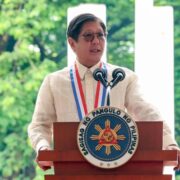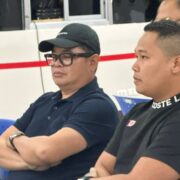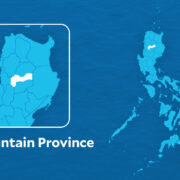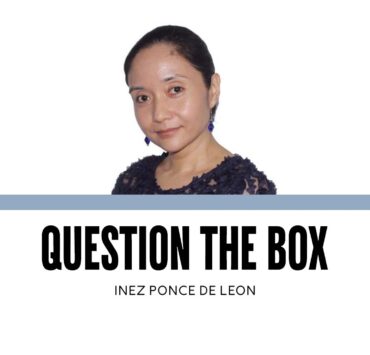‘The Viper’

Revolutionary Gen. Artemio Ricarte fought in two revolutionary periods, first during the Philippine Revolution against Spain, then the Philippine-American War. He is also known under his nom de guerre “Vibora” (Viper). How is he remembered today? Depending on the book you are reading, he can either be a hero or a heel. In his birthplace, Batac, Ilocos Norte, he is a hero. Captured by the enemy in 1900, he was exiled to Guam with other “irreconcilables,” who included Apolinario Mabini, and could not return home because he refused to take the oath of allegiance to the United States, which took over Spain as the colonial master.
Ricarte was exiled again to Hong Kong, where he plotted against the US colonial government in the Philippines. He returned secretly in December 1903 and vainly attempted to rekindle the flames of the Philippine Revolution. With a huge bounty on his head, Ricarte was betrayed by his former comrades, one of them, Gen. Pio del Pilar. He was caught and imprisoned in Bilibid for six years, then released in 1910 for good behavior, five years before serving his full sentence. Ricarte then spent five years in Hong Kong and close to three decades in Japan before he was returned to the Philippines during the Japanese Occupation. America was the old enemy for Ricarte, and he was on the wrong side of history by siding with the Japanese. On July 31, 1945, Ricarte died of dysentery in Hungduan, Ifugao. A rather sad end for a man who was a hero to Filipinos at the end of the 19th century and the beginning of the 20th century, but who, at the close of World War II died in the mountains, scared of his own people.
Years ago, I unveiled the historical marker in Hungduan that I thought was the actual place where Ricarte died. It was situated in a barangay basketball court, on a hill, and I was surprised to be told that the actual site where the Viper passed away was further down, where I was warned it was inconvenient for visitors. The marker states that this was the place where the remains of Ricarte were first interred in 1945. The remains were later transferred and hidden in a nearby cave in 1954 and were given what was believed to be his final resting place at the Libingan ng mga Bayani in 1978. But there was no end to Ricarte’s wandering, because in 1997, his remains were dug up again—half were kept at the Libingan ng mga Bayani, and the other half interred at the Ricarte Shrine in Batac, Ilocos Norte.
Ricarte’s peripatetic wanderings, in life and death, reminded me of other shrines to the memories of the Second World War. Many of these shrines, like Mt. Samat, Capas, and Kiangan, were established and built during the term of then President Ferdinand Marcos Sr. (1965-1986), who once boasted of a heroic war record that has since been proven by historians to be largely fabricated. Again, we ask ourselves, how should Marcos Sr. be remembered today? The anti-Marcos groups that protested his burial at the Libingan ng mga Bayani see the world differently from those in Ilocos Norte, who still revere “Da Apo” as a war hero and president. One good thing that comes out of this controversy is that, though unsettled as many historical issues are, the burials of these two men from Batac or “Anak ti Batac” encourage a frank evaluation of their acts and memory.
A number of mass protests were organized to stop the burial of Marcos Sr. at the Heroes Cemetery by people who did not consider him a hero, since doubt has been cast on his war record. He was ousted as president in 1986 by people power, fed up with his authoritarian rule marked by human rights violations and corruption on a large scale, unknown before or since. One good thing that came out of this controversy is that it has focused on a frank evaluation of Marcos Sr.—the man and his acts as president— and Ricarte, the revolutionary general and the Japanese collaborator.
The Libingan ng mga Bayani was established to honor Filipinos who fell during World War II and is designed very much like the Manila American Cemetery and Memorial in Bonifacio Global City, except that it loses its punch because there are people buried there, like Philippine presidents and national artists, who are significant players in our history but cannot be classified as heroes like those who gave their lives in war.
The Manila American Cemetery and Memorial is very moving in its simplicity, a rolling landscape of green dramatically dotted by rows upon rows of what seems to be an unending array of white crosses (and markers for nonChristians). Inside the wide pavilion is a wall of memory: marble walls filled with what appears to be an infinite number of names, accompanied by military rank and designation. There are no graphic depictions of the violence of war, but a quiet remembrance that makes the visitor learn the lesson we never learn. It reminds us of a powerful line from the Bible that reads: “And they shall beat their spears into pruning hooks, nation shall not lift hand against nation, neither shall they learn war anymore.“ We often think history is about remembering, when it is also about forgetting.
Ambeth is a Public Historian whose research covers 19th century Philippines: its art, culture, and the people who figure in the birth of the nation. Professor and former Chair, Department of History, Ateneo de Manila University, he writes a widely-read editorial page column for the Philippine Daily Inquirer, and has published over 30 books—the most recent being: Martial Law: Looking Back 15 (Anvil, 2021) and Yaman: History and Heritage in Philippine Money (Bangko Sentral ng Pilipinas, 2021).


















What Marcos should do in the next three years